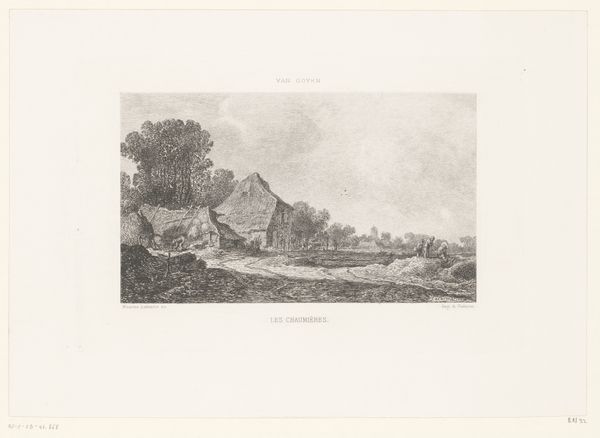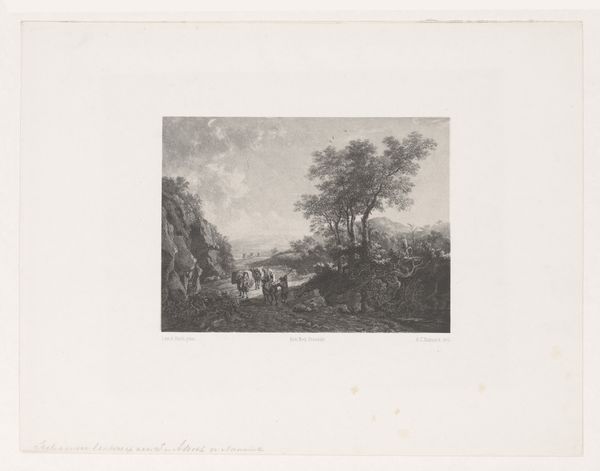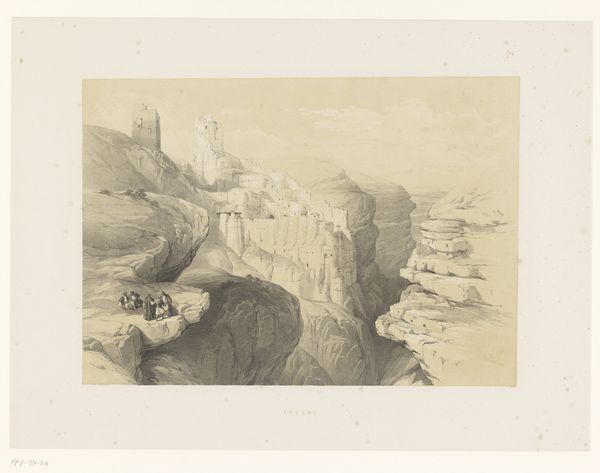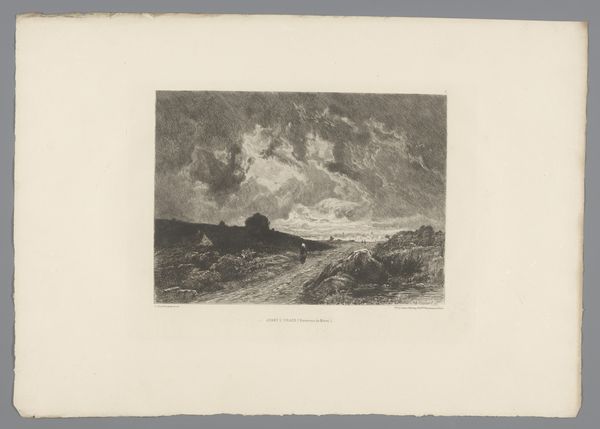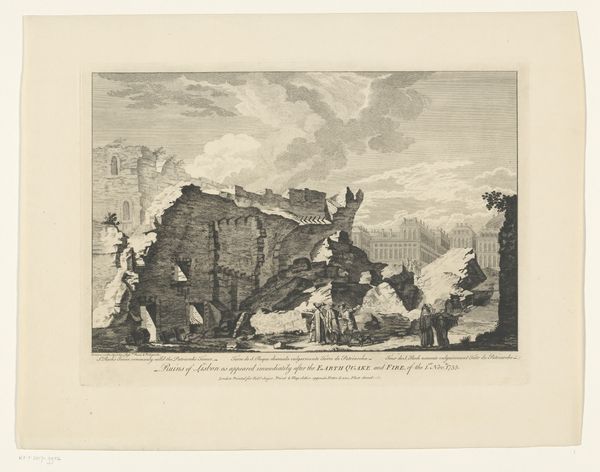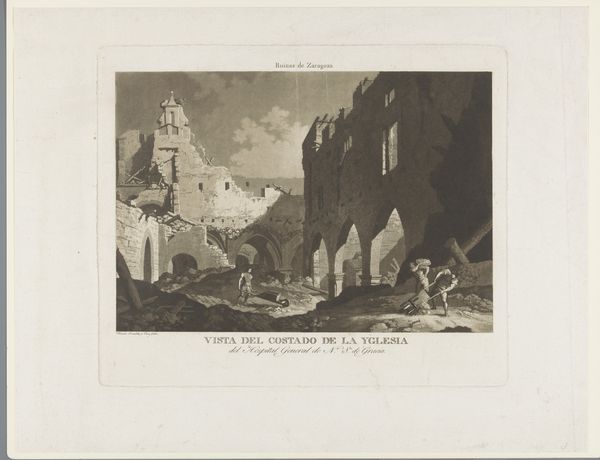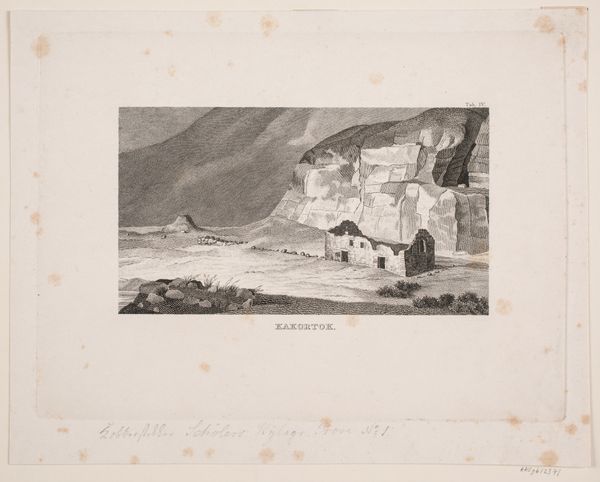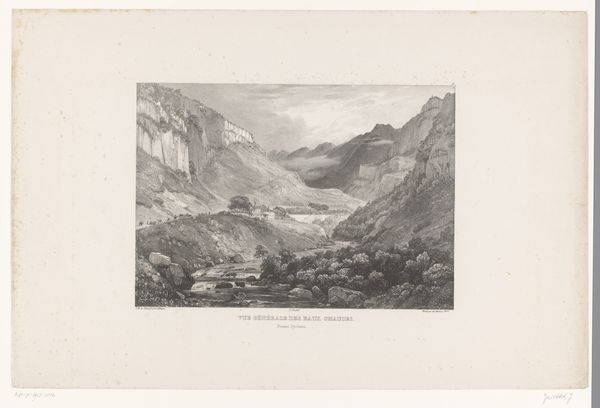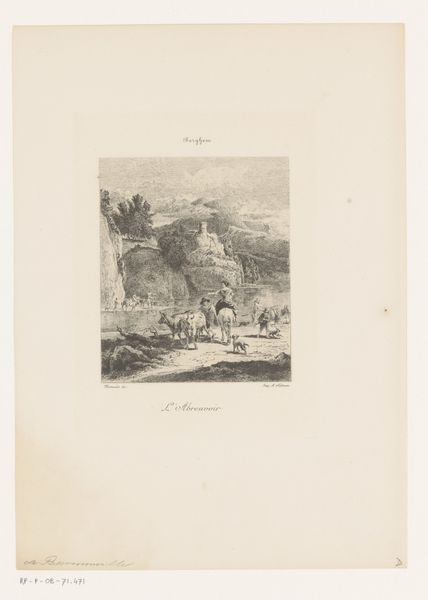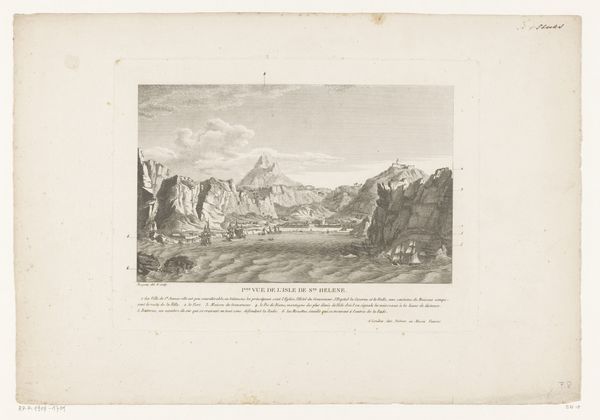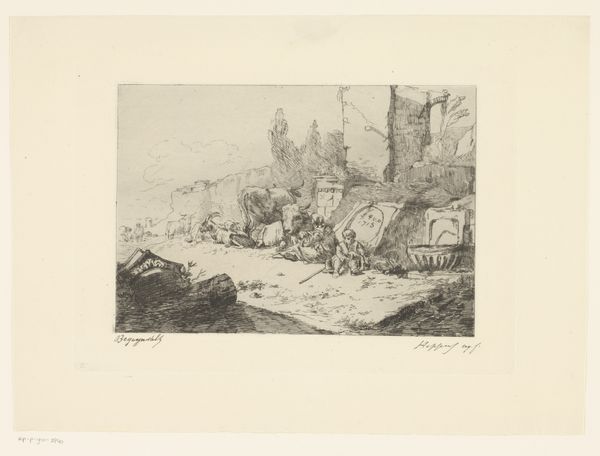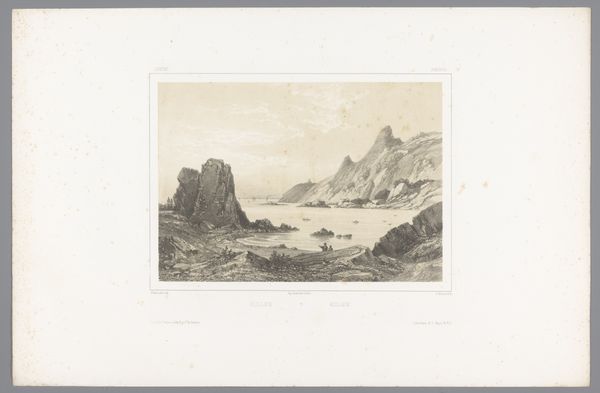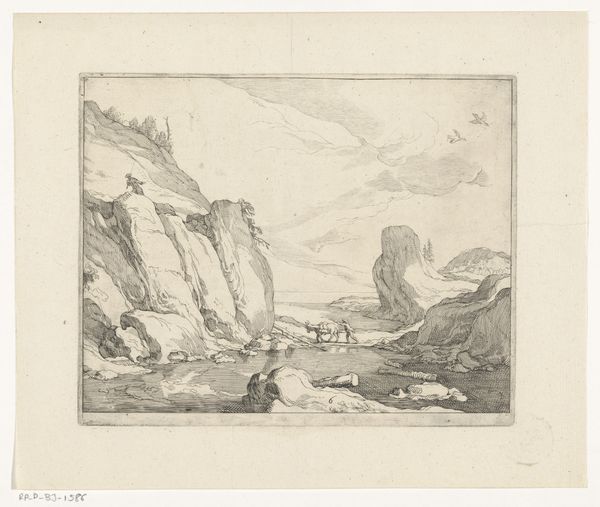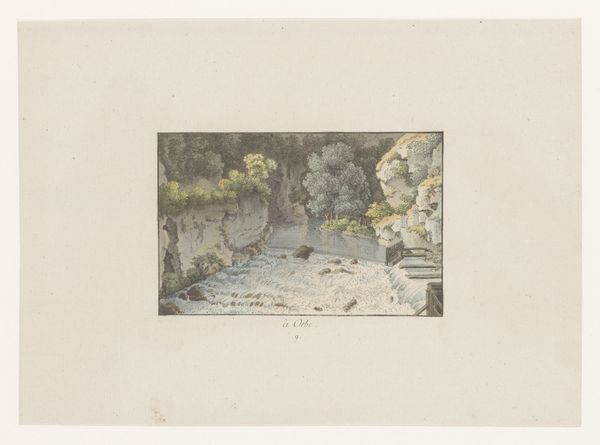
drawing, print, etching
#
drawing
# print
#
etching
#
landscape
Dimensions: Plate: 6 1/4 × 9 3/16 in. (15.8 × 23.4 cm) Sheet: 9 1/4 × 11 5/16 in. (23.5 × 28.8 cm)
Copyright: Public Domain
Editor: This is "The Village of Chanaz (Savoie)", an etching by Adolphe Appian, created in 1866. The sharp contrasts create an almost somber atmosphere, despite depicting a natural landscape. I’m particularly struck by how the dense lines add texture to the stone wall and the water. What compositional elements stand out to you? Curator: It is intriguing how Appian uses line to define space and form. Notice how the varying densities of the etched lines not only describe the material qualities but also control the light and shadow, creating a complex interplay. The composition emphasizes a distinct contrast between the rugged cliff on the left and the constructed wall on the right, doesn't it? Editor: Yes, that division is quite striking! The textures on either side are also distinct—rough and natural versus ordered and built. What effect does that contrast create, do you think? Curator: Formally, this division provides a spatial and textural tension. It encourages the eye to move between the natural and the man-made, forcing us to consider their relationship through line, tone, and form alone. Without delving into symbolism, one might see a comment on humanity’s imposition on the landscape, strictly observed through formal devices. What did you glean? Editor: That’s insightful. I initially focused on the mood but understanding the formal dialogue between the elements adds a richer layer to my interpretation. I'll pay closer attention to line and form in future analyses. Curator: Indeed. Paying close attention to form allows us to appreciate how artists can elicit complex feelings without reliance on overt symbolism. It underlines how art can communicate meaning intrinsically.
Comments
No comments
Be the first to comment and join the conversation on the ultimate creative platform.
